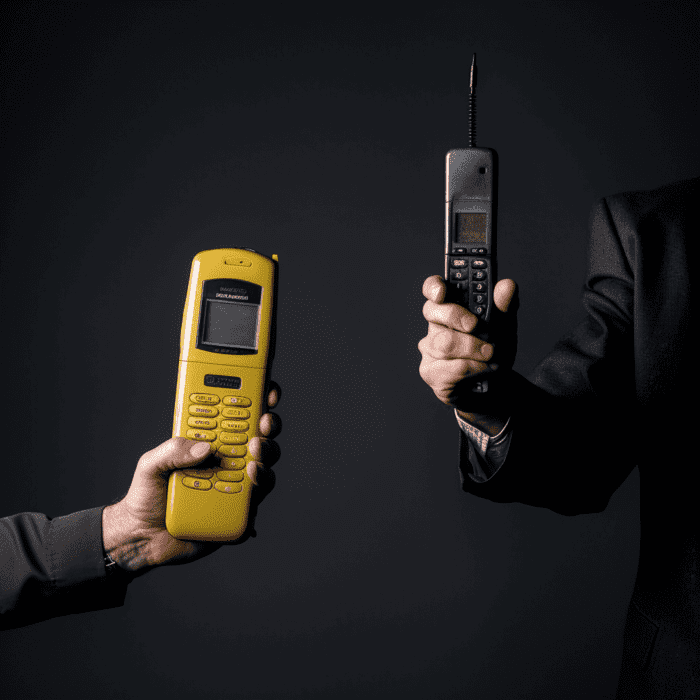
In today's hyper-connected world, communication plays a pivotal role in all aspects of life, including business, travel, and emergency response. While traditional cell phones have become an integral part of our daily routines, they may fall short when it comes to reaching beyond the boundaries of conventional cellular coverage. In contrast, satellite phones offer a robust and reliable solution for staying connected in remote and isolated areas. In this article, we will explore the key differences between satellite phones and traditional cell phones, helping individuals and organizations make the right choice for their remote operations.
One of the most significant advantages of satellite phones is their ability to operate globally, virtually anywhere on the planet. Traditional cell phones rely on terrestrial cell towers, which means they require adequate coverage from cellular providers. In remote areas, such as deep forests, deserts, mountains, or open seas, cellular coverage may be non-existent or severely limited. Satellite phones, on the other hand, communicate directly with satellites orbiting the Earth, providing a broader and more reliable reach in these challenging terrains.
In emergency situations, reliable communication can be a matter of life and death. Disasters such as earthquakes, hurricanes, or floods often cause severe damage to terrestrial communication infrastructure, leaving communities cut off from assistance. Satellite phones shine in these critical moments, offering a lifeline to emergency services and allowing affected individuals to call for help or inform their loved ones about their safety.
While satellite phones excel in connectivity where cellular networks falter, there is a trade-off in terms of data speed and bandwidth. Traditional cell phones connected to 4G or 5G networks can achieve high data speeds, enabling fast internet browsing, video streaming, and smooth file downloads. Satellite phones, operating on satellite networks, have relatively lower data speeds, making data-intensive tasks slower and less convenient. However, satellite data speeds have improved over the years, and they remain sufficient for essential communication needs, such as email and basic internet access.
Cost is a crucial factor when choosing between satellite phones and traditional cell phones. Generally, satellite phones tend to be more expensive to purchase and operate than traditional cell phones. The specialized technology required for satellite communication, as well as maintaining a constellation of satellites, contributes to the higher costs. In contrast, traditional cell phones are widely available at affordable prices, with various service plans to suit different budgets.
For occasional or short-term needs, renting satellite phones might be a cost-effective option. Organizations with regular operations in remote areas may find it more economical to invest in satellite phones and establish long-term service plans.
Battery life is another area where satellite phones outshine traditional cell phones. Due to their reliance on satellite communication, satellite phones are designed to have extended battery life compared to cell phones that constantly search for cellular signals and operate various applications in the background. In remote areas where charging facilities are limited, the prolonged battery life of satellite phones can be a significant advantage.
Satellite phone calls are renowned for their clarity and reliability. Unlike traditional cell phones that may suffer from call drops or poor voice quality in areas with weak cellular coverage, satellite phones maintain consistent communication quality, as long as there is a clear line of sight to the satellite. This aspect is particularly important for crucial business communications, emergency calls, and vital information exchange.
Traditional cell phones are typically smaller, sleeker, and more portable than most satellite phones. The compact design of cell phones makes them convenient for daily use and easy to carry in pockets or purses. In contrast, satellite phones, especially those with extended battery life and rugged build for outdoor use, may be bulkier and require a separate carrying case or holster.
The choice between satellite phones and traditional cell phones depends on the specific needs of individuals and organizations involved in remote operations. Satellite phones provide unparalleled coverage and reliability in areas where cellular networks are absent or unreliable. They are essential lifelines during emergencies and critical for adventurers, explorers, and humanitarian missions operating in remote regions.
On the other hand, traditional cell phones excel in urban and suburban environments with extensive cellular coverage, offering faster data speeds and numerous applications for daily use. They are cost-effective for regular communication needs, especially when data-intensive tasks are frequent.
For many organizations and individuals, a practical approach might involve having both satellite phones and traditional cell phones. This strategy ensures comprehensive communication capabilities, with satellite phones serving as a reliable backup for emergency situations or remote operations. By understanding the strengths and weaknesses of both communication tools, users can make an informed decision and stay connected, regardless of their location or the challenges they face.
This article was created by ABDA's content writers. We're a team who write's valuable and seo-friendly articles for communications technology websites. Let us help you with your website's next blog post!
If you would like this article to link to your website, let us know.
Find more communications technology articles here on ABDA!
August 3rd 2023